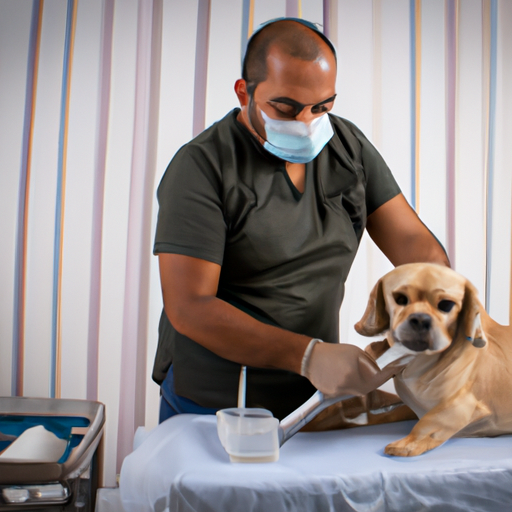Understanding the Basics of Spaying
Hello there, caregiver! Your pet’s health is of utmost importance to you, and naturally, you’re keen on learning about spaying. Spaying, also known as an ovariohysterectomy, is a surgical procedure carried out on female dogs to remove both the ovaries and uterus. This procedure prevents your dog from going into heat and getting pregnant.
The Right Time to Spay
So, when should your furry friend be spayed? While there’s no one-size-fits-all answer, there are typical recommendations:
- Puppy Spaying: Most vets recommend spaying puppies between 6 to 9 months of age.
- Adult Dog Spaying: For adult dogs who have never been spayed, it’s typically safe to do so at any age. However, it’s best to consult with your vet for personalized advice.
Remember, every dog is unique, and what works best for one may not work for another.
Benefits of Spaying
Spaying your dog isn’t just about avoiding unplanned puppies. Here are some benefits:
- Prevents uterine infections and breast tumors, which can be malignant in about 50% of dogs.
- Helps avoid messy heat cycles.
- Reduces the likelihood of your dog wandering off in search of a mate.
Potential Risks and Side Effects
Just like any surgical procedure, spaying isn’t without risks:
- Surgical Risks: Complications from anesthesia or the surgery itself can occur, although they’re rare.
- Weight Gain: Spayed dogs are more prone to weight gain, so you might need to adjust their diet and exercise routine.
- Behavioral Changes: Some dogs may show changes in behavior after being spayed.
Here’s a simple table summarizing the pros and cons:
| Benefits | Potential Risks |
|---|---|
| Prevents certain health issues | Surgical complications |
| Avoids messy heat cycles | Possible weight gain |
| Reduces wandering off | Potential behavioral changes |
The Healing Process
After the surgery, your dog will need plenty of rest to recover:
- Limit physical activity for at least two weeks.
- Check the incision site daily for signs of infection.
- Use an Elizabethan collar (the “cone of shame”) to prevent your dog from licking the incision site.
FAQ
Q: Can I spay my dog while she’s in heat?
A: It’s generally safer to wait until your dog is out of heat due to increased blood flow to the area, which can lead to complications.
Q: Will spaying change my dog’s personality?
A: While some behavioral changes can occur, most dogs will not experience major changes in their personality.
Q: Will my dog gain weight after being spayed?
A: While spayed dogs are more prone to weight gain, a balanced diet and regular exercise can help maintain a healthy weight.
Q: How long does it take for a dog to recover from being spayed?
A: Recovery typically takes two weeks, but this can vary based on the dog’s age and overall health.
In conclusion, while the decision to spay your dog is a personal one, understanding the procedure, its benefits, and potential risks can help you make an informed choice. Always consult with your vet to determine the best course of action for your furry friend.



